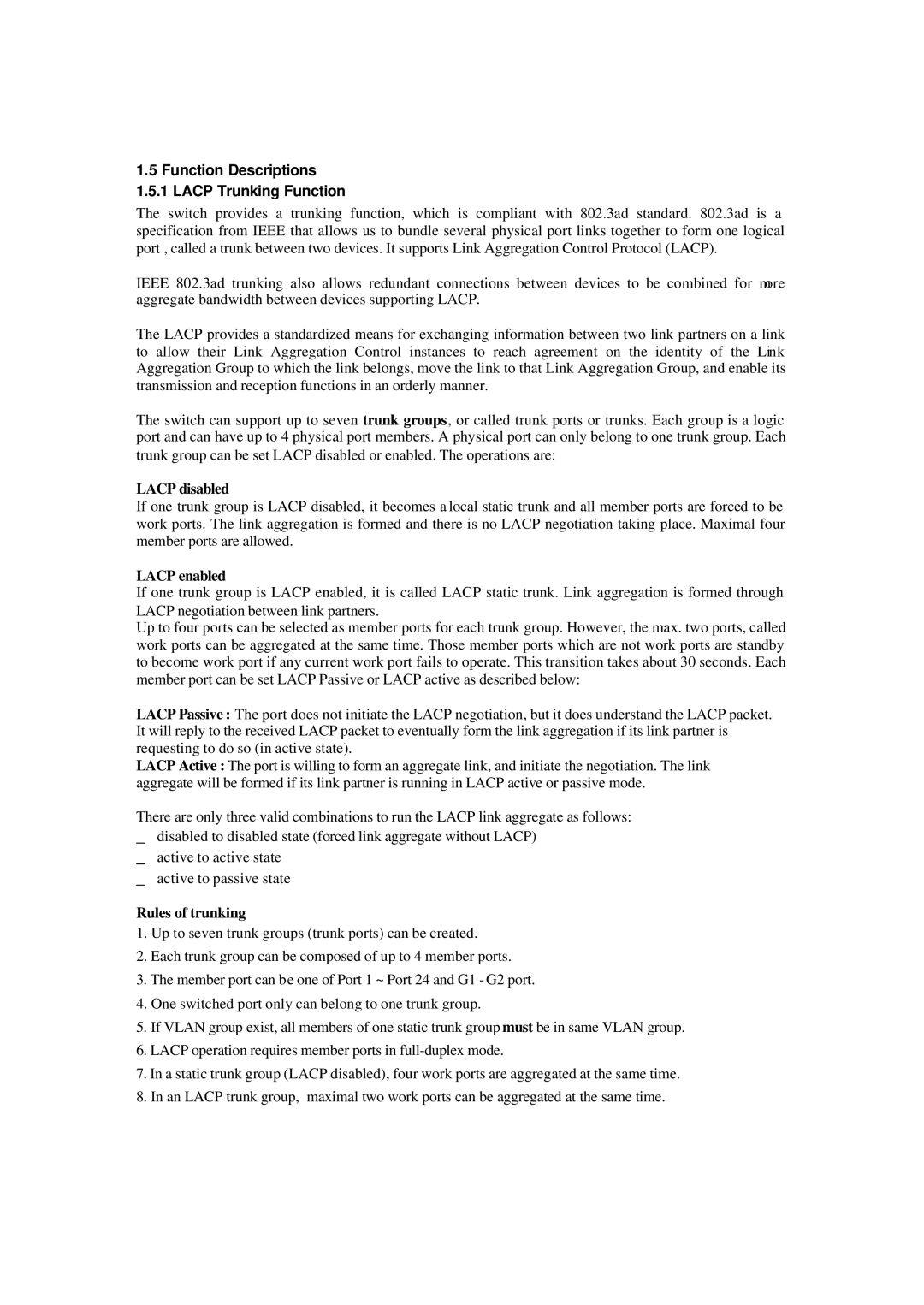1.5Function Descriptions 1.5.1 LACP Trunking Function
The switch provides a trunking function, which is compliant with 802.3ad standard. 802.3ad is a specification from IEEE that allows us to bundle several physical port links together to form one logical port , called a trunk between two devices. It supports Link Aggregation Control Protocol (LACP).
IEEE 802.3ad trunking also allows redundant connections between devices to be combined for more aggregate bandwidth between devices supporting LACP.
The LACP provides a standardized means for exchanging information between two link partners on a link to allow their Link Aggregation Control instances to reach agreement on the identity of the Link Aggregation Group to which the link belongs, move the link to that Link Aggregation Group, and enable its transmission and reception functions in an orderly manner.
The switch can support up to seven trunk groups, or called trunk ports or trunks. Each group is a logic port and can have up to 4 physical port members. A physical port can only belong to one trunk group. Each trunk group can be set LACP disabled or enabled. The operations are:
LACP disabled
If one trunk group is LACP disabled, it becomes a local static trunk and all member ports are forced to be work ports. The link aggregation is formed and there is no LACP negotiation taking place. Maximal four member ports are allowed.
LACP enabled
If one trunk group is LACP enabled, it is called LACP static trunk. Link aggregation is formed through LACP negotiation between link partners.
Up to four ports can be selected as member ports for each trunk group. However, the max. two ports, called work ports can be aggregated at the same time. Those member ports which are not work ports are standby to become work port if any current work port fails to operate. This transition takes about 30 seconds. Each member port can be set LACP Passive or LACP active as described below:
LACP Passive : The port does not initiate the LACP negotiation, but it does understand the LACP packet. It will reply to the received LACP packet to eventually form the link aggregation if its link partner is requesting to do so (in active state).
LACP Active : The port is willing to form an aggregate link, and initiate the negotiation. The link aggregate will be formed if its link partner is running in LACP active or passive mode.
There are only three valid combinations to run the LACP link aggregate as follows: _ disabled to disabled state (forced link aggregate without LACP)
_ active to active state _ active to passive state
Rules of trunking
1.Up to seven trunk groups (trunk ports) can be created.
2.Each trunk group can be composed of up to 4 member ports.
3.The member port can be one of Port 1 ~ Port 24 and G1 - G2 port.
4.One switched port only can belong to one trunk group.
5.If VLAN group exist, all members of one static trunk group must be in same VLAN group.
6.LACP operation requires member ports in
7.In a static trunk group (LACP disabled), four work ports are aggregated at the same time.
8.In an LACP trunk group, maximal two work ports can be aggregated at the same time.
